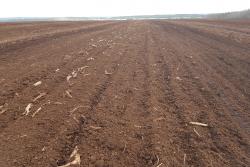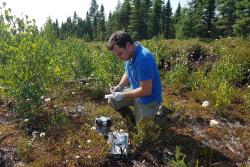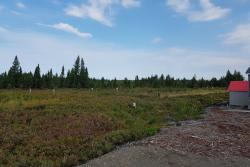ΒιΆΉΝψ scientists turn damaged wetlands into carbon stores
 A Canadian peat extraction site.A team of scientists have developed a new method to help damaged peat bogs capture more carbon, cutting the release of greenhouse gases.
A Canadian peat extraction site.A team of scientists have developed a new method to help damaged peat bogs capture more carbon, cutting the release of greenhouse gases.
The group, led by researchers from ΒιΆΉΝψ in North Wales, say their work could lead to new practises being developed for peatland restoration.
Peat bogs are already known to be one of the planetβs most important stores of carbon, but many of them are in a bad condition, and some of them are even dug-up for their peat, which is used in the horticultural industry.
Such areas often undergo intensive restoration process, particularly in Canada, where some of the scientists involved in this ground-breaking research are based.
Work by the team found adding natural waste products, such as certain wood chippings, to the damaged sites before the normal restoration work was completed, ensured more carbon than ever before was captured by the wetland habitats. Data gathering from a wetland restoration site in Canada.Explaining their findings, Dr Christian Dunn from the University's School of Natural Sciences said:
Data gathering from a wetland restoration site in Canada.Explaining their findings, Dr Christian Dunn from the University's School of Natural Sciences said:
βThe natural products we added to the damaged peat bogs released chemicals called phenolics.
βThese phenolics happen to be incredibly powerful supressors of decomposition, which means any further breakdown of the peat that is left, or any other dead plant material, is stopped.
βIf allowed to take place this breakdown would ultimately produce the greenhouse gas, carbon dioxide.β
βSo preventing this gas from being released means that we are keeping significant amounts of carbon locked-up in these wetland peat bogs; ultimately helping in the fight against climate change,β Dr Dunn added.
Prof Chris Freeman, director of the ΒιΆΉΝψ Wetlands Group at the University School of Natural Sciences said:
βWe obviously want to keep as much peat as possible in the ground, but some is removed for various reasons β such as the production of gardening compost.
 A Canadian wetland siteβIn Canada there are strict regulations for the restoration of any peatland site used in this way.β
A Canadian wetland siteβIn Canada there are strict regulations for the restoration of any peatland site used in this way.β
βOur methods involve just a slight modification of the established revegetation methods β but they offer huge benefits in the amount of carbon these damaged peatlands can store, in a relatively short period of time,β Prof Freeman said.
Recent work by another ΒιΆΉΝψ lecturer, Dr Nathalie Fenner, add another level of support for the importance of peatlands as carbon stores.
βAnd the good news is that last month we published a paper in Nature Climate Change showing that all that extra stored carbon should even be resistant to decomposition during droughts, while protecting the host peatland,β said Dr Fenner.
ΒιΆΉΝψ is a leading research institute on wetland science and students are given unique opportunities to learn about these habitats and visit sites all over the world.
For more information on this research please visit:
and
.
